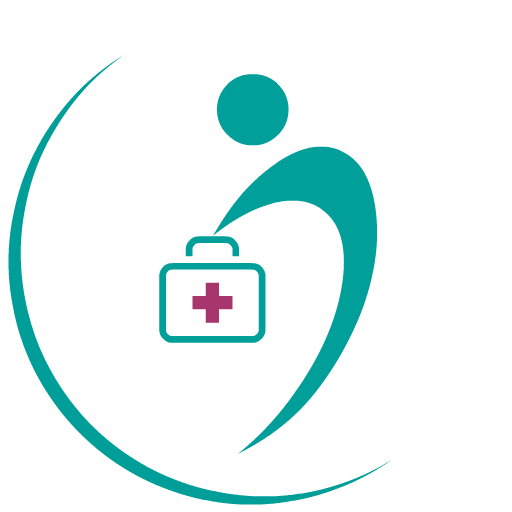Heart pain is a complex and often an alarming experience that can signal underlying issues within our cardiovascular system
Worried About Heart Pain? Here Are the Answers You Need
Heart pain is a complex and often an alarming experience that can signal underlying issues within our cardiovascular system.
In this blog, we will delve into the intricacies of heart pain, exploring its types, causes, diagnosis, and preventive measures.
Understanding Heart Pain: A Comprehensive Guide
Heart pain, often referred to as chest pain, is a sensation of discomfort or distress in the chest area. It can vary in intensity, duration, and may be accompanied by other symptoms like shortness of breath or nausea. While not all chest pain is related to the heart, it's crucial to promptly evaluate any such discomfort, as it could be indicative of serious cardiac conditions. Seeking medical attention is essential to determine the cause and thereby receive appropriate care.
1. The Significance of Heart Pain
Heart pain, also known as angina or chest pain, is a sensation of discomfort or distress in the chest area. It is crucial to recognize its sign and symptoms (listed below ) as it can be indicative of various heart-related conditions, ranging from mild to severe.
2. Anatomy of the Heart
To comprehend heart pain, we must first understand the remarkable organ at its center. The heart is a muscular organ that pumps blood throughout the body. It consists of four chambers – two atria (upper chambers) and two ventricles (lower chambers). Blood flows from the body into the right atrium, then to the right ventricle, and is pumped to the lungs for oxygenation. Oxygenated blood returns to the left atrium, moves to the left ventricle, and is pumped out to the rest of the body. Valves, like the mitral and tricuspid valves, regulate blood flow. Coronary arteries supply the heart muscle with oxygen and nutrients.
Exploring its anatomy provides insights into how disruptions can lead to pain and discomfort.
3. Types of Heart Pain
a. Angina
Angina is a common type of heart pain caused by reduced blood flow to the heart muscle. Understanding the different forms of angina, such as stable and unstable, aids in recognizing symptoms and seeking appropriate care.
b. Myocardial Infarction (Heart Attack)
A heart attack is a severe condition where part of the heart muscle dies due to insufficient blood supply. Recognizing the symptoms, including intense chest pain, is crucial for prompt medical intervention.
4. Causes of Heart Pain
Various factors contribute to heart pain, including:
a. Coronary Artery Disease
The narrowing of coronary arteries restricts blood flow to the heart, leading to angina and potentially a heart attack.
b. Heart Valve Disorders
Malfunctioning heart valves can cause pain and affect the heart's ability to pump blood efficiently.
c. Cardiomyopathy
This condition involves abnormalities in the heart muscle, impacting its ability to contract and pump blood effectively.
5. Risk Factors for Heart Pain
Understanding the risk factors associated with heart pain is essential for prevention. Factors such as age, family history, smoking, high blood pressure, and high cholesterol contribute to the likelihood of developing heart-related issues.
6. Recognizing Signs and Symptoms
Being able to identify the signs and symptoms of heart pain is crucial for early intervention. Symptoms may include chest discomfort, shortness of breath, nausea, and pain radiating to the arms, neck, or jaw.
Common signs and symptoms of heart pain (Angina) includes:
Chest Discomfort: A feeling of pressure, tightness, burning, or fullness in the chest.
Pain Radiation: Discomfort may spread to the arms (often the left arm), neck, jaw, shoulder, or back.
Shortness of Breath: Difficulty breathing, often accompanying chest discomfort.
Nausea: Feeling sick to your stomach or an urge to vomit.
Fatigue: Unexplained tiredness or weakness.
Sweating: Profuse sweating, often described as cold and clammy.
Dizziness or Lightheadedness: Feeling faint or unsteady.
It's important to note that symptoms can vary, and not everyone experiences all of these signs. If you suspect heart pain, seek immediate medical attention, as it could indicate a serious cardiac issue.
7. Diagnosis and Testing
a. Electrocardiogram (ECG or EKG)
This common test records the heart's electrical activity, aiding in the diagnosis of various heart conditions.
b. Stress Test
Measuring the heart's response to exertion helps identify potential issues with blood flow.
c. Angiogram
This imaging test provides a detailed view of blood vessels, helping diagnose blockages or abnormalities.
8. Treatment Options
Treatment for heart pain varies based on the underlying cause and severity. Medications, lifestyle changes, and surgical interventions, such as angioplasty or bypass surgery, may be recommended.
9. Prevention Strategies
a. Healthy Lifestyle
Embracing a heart-healthy lifestyle through a balanced diet, regular exercise, and stress management significantly reduces the risk of heart pain.
b. Regular Check-ups
Routine medical check-ups help monitor cardiovascular health and detect potential issues early on.
10. Living with Heart Pain
Managing chronic heart pain requires a holistic approach, addressing both physical and emotional aspects. Support from healthcare professionals, lifestyle adjustments, and psychological well-being play crucial roles in improving the quality of one's life.
Conclusion
Understanding heart pain involves unraveling the complexities of cardiovascular health. Recognizing symptoms, embracing a heart-healthy lifestyle, and seeking timely medical attention are paramount for preventing and managing heart-related issues. By fostering awareness and adopting proactive measures, we can strive towards a heart-healthy future.
Blogs
Stay connected to health experts and read what they have to say via DocSmart.
Please sign up to create your own blog





